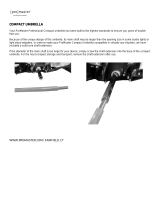
Profoto Air USB – Profoto Studio Air
5
www.profoto.com
Table of Contents
System description ...................................................................................................6
Profoto Air ...................................................................................................6
Profoto Air Remote..........................................................................7
Profoto Air Sync ..............................................................................7
Profoto Air USB ...............................................................................7
Profoto Studio Air ............................................................................7
Nomenclature ......................................................................................................8
Functionality ....................................................................................................10
Power supply ................................................................................10
Energy control ..............................................................................10
Modeling light...............................................................................10
Sync signaling ..............................................................................10
Ready signaling ............................................................................11
Ready indicator/Test function ........................................................11
Flash before ready ........................................................................11
Remote control .............................................................................12
Color temperature ........................................................................12
Refl ector .......................................................................................12
Umbrella .......................................................................................12
Operating instructions .............................................................................................13
Stand mounting ............................................................................13
Mounting of external refl ector .......................................................13
Umbrella mounting .......................................................................13
Glass cover mounting ...................................................................13
Power connection .........................................................................13
Energy level setting ......................................................................13
Modeling light setting ...................................................................14
Ready signaling setting .................................................................14
Sync via cable ..............................................................................15
Sync via IR ...................................................................................15
Sync via radio (D1 without Profoto Air) ..........................................15
Sync via radio (D1 with Profoto Air) ...............................................15
Radio settings (D1 with Profoto Air) ...............................................15
Turn off unit ..................................................................................16
Maintenance ....................................................................................................17
Changing fl ash tube and/or modeling lamp ...................................17
Changing built-in fuse ..................................................................18
Adaptive thermal control .........................................................................................19
Technical data ....................................................................................................20


























